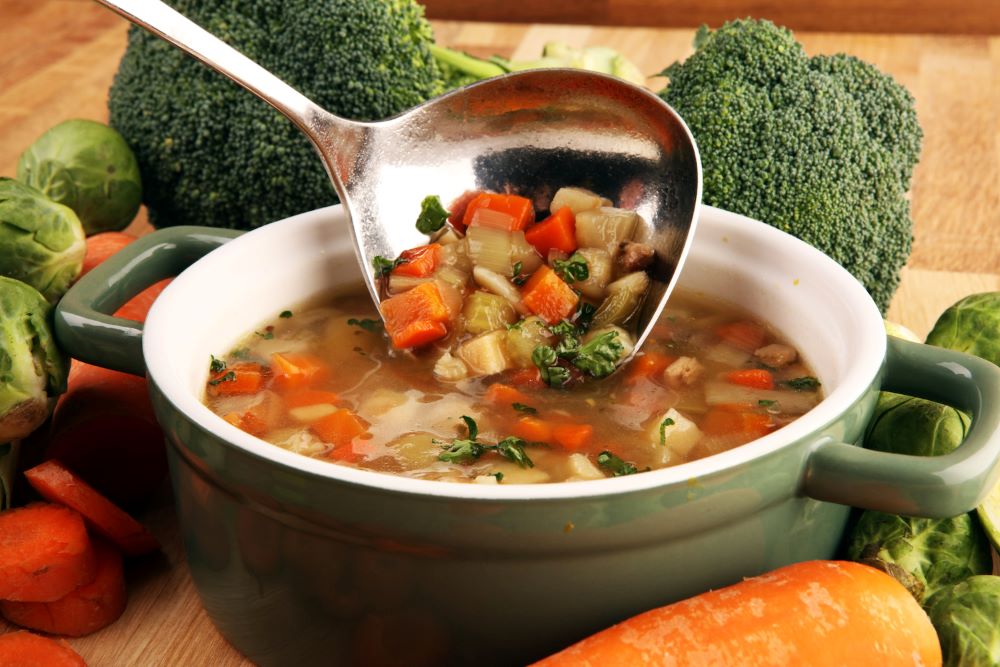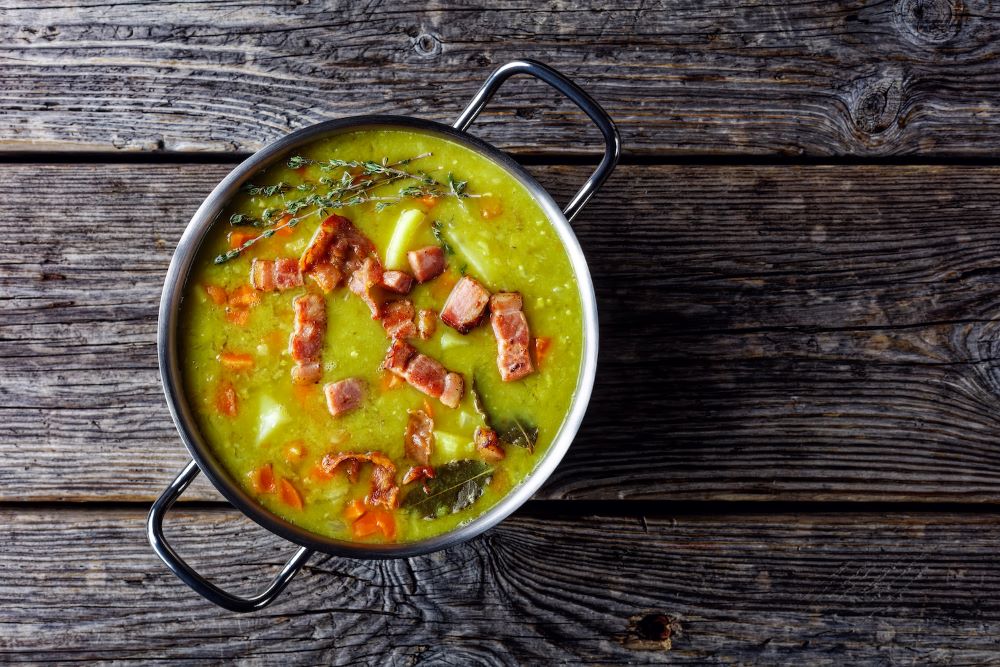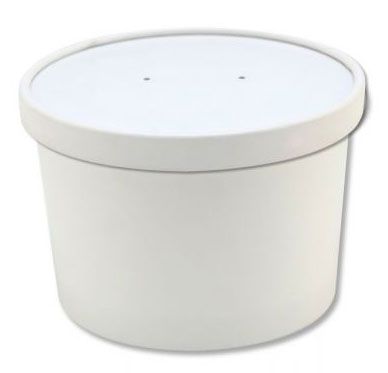A bowl of warm soup on a cold day is one of the best things in life. But what exactly makes a soup a soup? Join us as we explore the answer to this important question.
There are three main ingredients: the primary ingredient is water, followed by broth or stock, and lastly vegetables. Water is the simplest ingredient and is what all soups start with. Broth adds flavor and body to any savoury soup, and can be made from scratch or be purchased pre-made. Vegetables add nutrition, color, and texture.
In addition to these three main ingredients, there are a few other things that can make it even more delicious. Common additions include meat, pasta, rice, beans, lentils, spices, and herbs. These ingredients can be added to the soup in any combination that you like. The possibilities are endless!
It is one of the most versatile and satisfying meals out there. Whether you’re looking for something hearty or light, there’s an option for you. They are easy to make and an essential in any cooking class.
Why Do We Love Soup So Much?
Autumn is upon us, which means it’s time to start thinking about enjoying our first soup of the season! Soup is the perfect comfort food; it’s warm, nourishing, and can be made with ingredients you probably already have in your kitchen. Plus, it’s easy to make in large batches and can be reheated for quick and tasty weeknight meals. But why do we love it so much? Let’s take a closer look.
Soup is Comforting
There’s something about soup that just feels comforting. Maybe it’s the warm, hearty ingredients, or maybe it’s the fact that it always seems to hit the spot. No matter what the reason, there’s no denying that soup is the perfect comfort food. When you need a little pick-me-up, reach for a bowl of your favorite flavour served warm and cozy up with a good book or movie. You’ll be warm and content in no time.
Soup is Nourishing
Soup is not only comforting, but it’s also packed with nutrients that your body needs to function at its best. It is a great source of vitamins, minerals, and antioxidants, all of which are essential for good health. So next time you’re looking for a nutritious meal that will leave you feeling satisfied, turn to soup. You’ll get all of the nutrients you need without having to sacrifice flavor.
It is Versatile
One of the best things about soup is that it can be made with almost any combination of ingredients. Need to use up some veg before it goes bad? Have some leftover mashed potatoes from yesterdays dinner? Throw it all in a pot with some stock and spices and voila! There are endless possibilities when it comes to making soup, so you’re sure to find a recipe (or three) that you love. you can cook it on the hob in a dutch oven a slow cooker or even in the microwave. And if you’re feeling really adventurous, you can even try your hand at making your own homemade stock too.
Whether you’re looking for a comforting bowl of goodness or a nutrient-packed meal, soup has got you covered.
A Short History of Soup

Did you know that soup has been around for centuries? In fact, the first recorded mention dates all the way back to 6000 BC! Since then, soup has undergone a lot of changes; it has been made with different ingredients, in different styles, and for different purposes. Today, soup is a staple in cuisines all over the world.
Where Does Soup Come From?
The word “soup” comes from the French word “soupe,” which means “bread soaked in broth.” The first recorded mention dates back to 6000 BC, when an ancient cookbook included a recipe for a meat and vegetable stew. This early version of soup was probably quite different from the soups we know and love today; it was more like a thick stew than a thin, broth-based soup.
Soup gained popularity in Europe during the Middle Ages. At that time, most people did not have access to fresh fruits and vegetables year-round; instead, they relied on preserved foods like dried beans and salted meats. So, it’s no surprise that many medieval soups were made with these ingredients. One of the most popular traditional soup of that era was cock-a-leek soup, which is still enjoyed today. This Scottish soup is made with chicken, leeks, and potatoes.
Soup continued to evolve over the years. In the 18th century, portable soups became popular among British soldiers and explorers. These soups were usually made with dried meats and vegetables that could be easily carried on long voyages. Today, we have instant soups that can be prepared with just a few minutes and just enough liquid to turn it into a delicious snack or lunch. But some things never change— it is still enjoyed by people all over the world as a warming comfort food on cold days.
Soup has come a long way since its humble beginnings as a meat and vegetable stew 6000 years ago. Whether you like your soup thickened with mashed potatoes, butternut squash or cornflour or thin and light, hot or cold or cold like gazpacho, there’s sure to be a type of soup out there that you’ll enjoy!
The Many Health Benefits of Soup

It is not only a comforting food, but it can also be packed with nutrients and health benefits. Studies have shown that soup can improve digestion, boost immunity, and even help with weight loss. Here are just a few of the many benefits of soup:
Soup Can Improve Digestion
Soup can be helpful in dealing with constipation, diarrhea, and other digestive issues. The hot liquid helps to break down food, making it easier to digest. Soup also helps to keep you hydrated, which is important for maintaining a healthy digestive system. Furthermore, soup contains fibre, which is essential for good digestion.
Soup Can Boost Immunity
Soup can help to boost your immunity thanks to the high levels of vitamins and minerals found in many soups. For example, chicken soup contains cysteine, which helps to thin mucus and make it easier for your body to expel toxins. Soups made with greens are packed with antioxidants, which help to protect your cells from damage, even potato soup contains important nutrients. These nutrients work together to improve your overall health and help keep your immune system strong.
Soup Can Help With Weight Loss
Many soups are low in calories but high in protein and fiber, making them an excellent choice for those looking to lose weight. The protein and fiber will help to fill you up while the low calorie count will help you stay within your daily calorie goals. Additionally, soup can help you eat less at subsequent meals because it will have already taken the edge off your hunger. The hot water helps to fill your stomach so you feel fuller too.
It Can Help Your Child Get Their 5 A Day
Lots of children aren’t fans of veggies and soup is a great way of adding them into their diet. The main difference compared to say stews, is that you can liquidize the whole meal which in effect hides things like fish, onions, celery, pepper and other ingredients that lettle ones aren’t the biggest fans off. As you can see, soup can be a great addition to any diet. Not only is it delicious and comforting, but it can also provide numerous health benefits. But how do you make it? Read on to find out.
How to Make the Perfect Soup Every Time

1. Use fresh, high-quality ingredients
This may seem like an obvious one, but it really is the key to making a great soup. If your ingredients are past their best, your soup will be too. So make sure to use fresh, high-quality ingredients for the best results, there is no sustitute for a deep beef broth for example in a warming winter hot soup. Use the most expensive fish or meat that you can, fresh ginger rather than powdered, add butter rather than margarine, cream rather than milk if budget allows. Then you can use cheaper ingredients such as potatoes, rice, noodles and frozen vegetables to add to the meat.
2. Don’t overdo it on the seasoning
When it comes to seasoning soup, less is more. You can always add more seasoning later if you need to, but you can’t take it away once it’s been added. So start with a light hand and then build up the seasoning gradually until you get the perfect flavor. Too much sale and pepper can ruin a recipe instantly.
3. Use stock or broth instead of water
Water will just dilute the flavors of your soup, so it’s always best to use stock or broth instead. This will give your soup a much richer flavor and make it more enjoyable to eat. you can use beef broth, chicken or vegetable equivalents to add flavour.
4. Cook slowly and gently
Soup should never be boiled rapidly on a high heat – this will just make the ingredients tough and rubbery. If you are making a chunky soup boiling rapidly will break down your vegetables, you want to preserve the consistency. Instead, cook slowly and barely covered with a pan lid, so that all the flavours have time to come together and develop fully. This will result in a tastier, more satisfying soup.
You can even use a slow cooker, it’s a great way for the time poor – chuck everything in your slow cooker in the morning before you head off out and 6-8 hours later, your slow cooker will have done all the hard work for you! Do check cooking times though, you can experiment with cooking times if you are making new recipes up yourself, but keep checking at regular intervals and taste, taste, taste.
Once you’ve made soup, it will need to be stored properly, browse our range of storage containers here.
